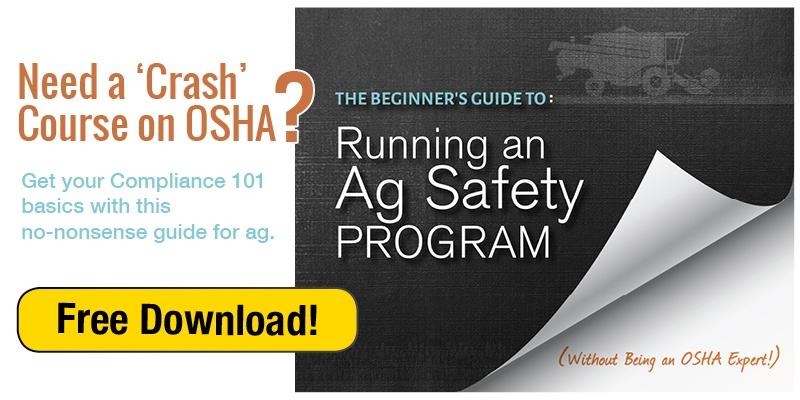Weather, pests, diseases, markets—these are a handful of factors affecting your agribusiness that are completely out of your control. You can try to prepare for them, but ultimately, you’re at their mercy. Luckily, OSHA fines are not on that list.

It's easy to find information about what OSHA inspectors will look for when they stop by and how they will determine any fines. For example, OSHA inspectors use four factors to assess penalties: the gravity of the violation, the size of the business, the employer’s good faith and the employer’s history of violations.
Calculating an OSHA Penalty
OSHA inspectors primarily use the gravity of a violation to figure penalty amounts. They consider both the probability and severity of the injury or illness that could result from the violation to calculate a gravity-based penalty (GBP). The maximum GBP is $7,000 and typically involves serious violations that could result in death.
Reducing an OSHA Penalty
The remaining three factors—business size, good faith and violation history—can significantly reduce a farm’s OSHA penalties. For example, an operation with one to 25 employees will receive up to a 60-percent reduction. On the other hand, agribusinesses with more than 250 employees don’t qualify for any penalty reduction.
Good-faith penalty reductions depend on an employer’s effort to implement an effective safety-and-health-management system in the workplace. Employers can qualify for reductions of 15, 25 or 35 percent.
Farms with repeated violations do not qualify for reductions in levied fines, unless OSHA hasn’t cited your operation in the last three years, you will qualify for a 10-percent reduction.
Avoiding Unnecessary Fines
You can control the likelihood of incurring an OSHA fine by being proactive in implementing an OSHA-compliant, ag-safety program at your facility. You don’t have to be an OSHA expert to develop a program, and you will realize $4 to $6 in savings for every dollar you invest in safety, according to the Agricultural Safety and Health Council of America.
Download The Beginner’s Guide to Running a Farm Safety Program to find out how to get started, or contact Good Day’s Work to discuss how to make an OSHA safety program work for your agribusiness.



